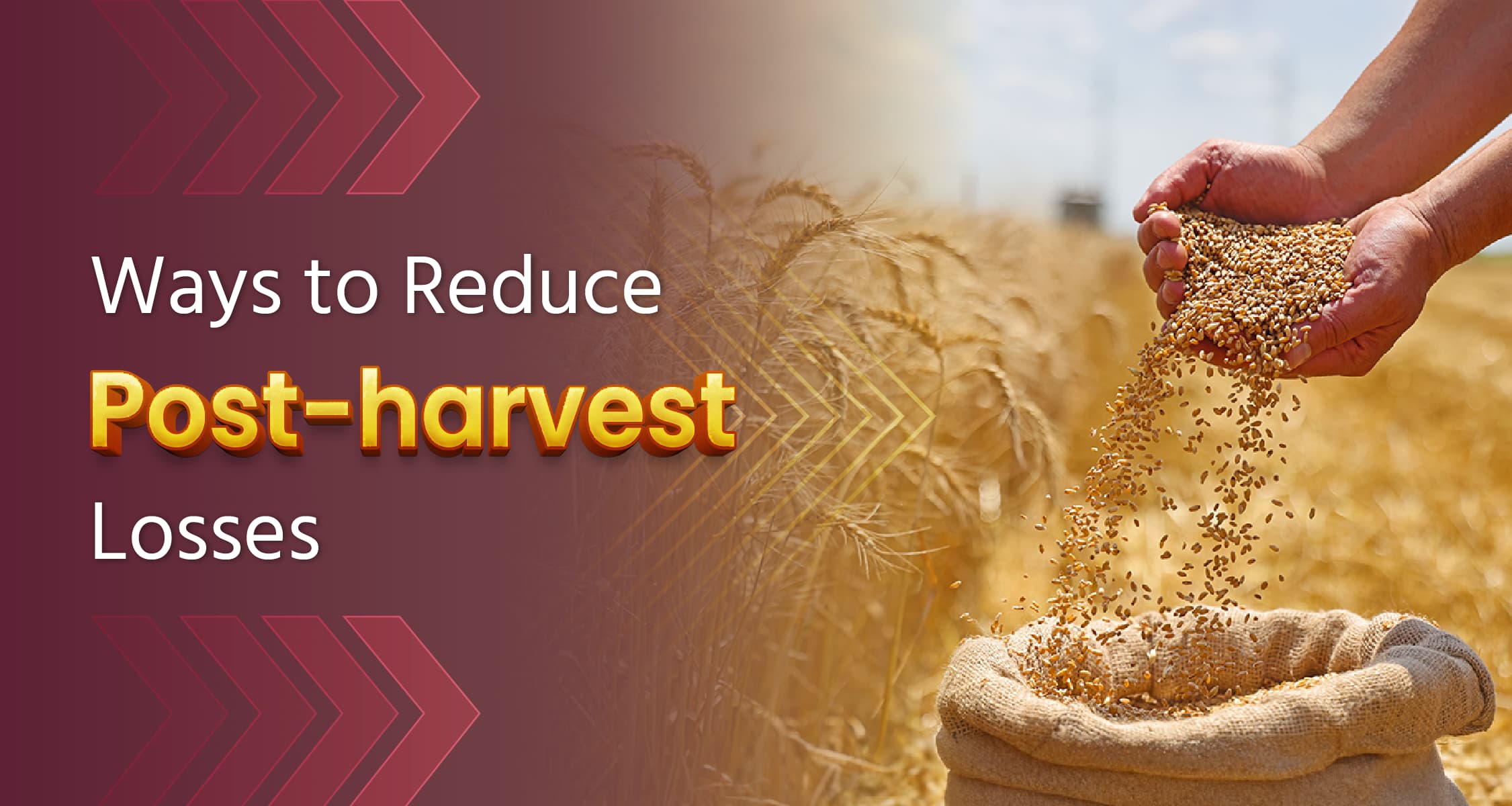Ways to Reduce Post-harvest Losses

After harvesting crops, it is very important to take proper care of them to ensure their quality is maintained. In India, due to improper harvesting methods, lack of adequate storage facilities, and logistical issues in transporting crops to markets, there is a significant loss in the supply chain. To address these problems, proper guidelines and timely management are extremely necessary to reduce crop wastage and deliver them to consumers in good quality. Effective post-harvest management can help minimize these losses and increase farmers' income.
How to Reduce Post-Harvest Losses?
Agricultural production in India is the mainstay of the country's economic and social development. Millions of farmers are associated with this sector, and their income depends on it. To help preserve the quality of produce and reduce losses after harvest, several important technical measures can be implemented. By considering these measures, farmers can effectively manage their crops.
- Harvesting at the Right Time: The timing of the harvest is extremely important. Delayed harvesting can reduce the quality of the crop and increase the chances of infection. By harvesting at the right time, farmers can maintain the high quality of their crops and sell them at better prices.
- Sorting and Grading: After harvesting, it is essential to sort and grade the crops. This process helps separate high-quality products from the damaged ones. Grading prepares the produce for proper marketing, allowing producers to fetch higher prices.
- Cleaning and Safety: Proper cleaning of the crop after harvesting is crucial. This helps remove pesticides, soil, and other contaminants that could spoil the product. Additionally, ensuring safety from harmful microorganisms and high temperatures is important to keep the produce safe.
- Packaging and Transportation: Proper packaging and transportation play a vital role in protecting the crops. Good packaging safeguards the product, reducing damage during transport. Producers should choose suitable packaging materials that maintain safety and shelf life.
- Storage: Adequate storage facilities are also critical in minimizing losses. The produce should be stored in cool conditions with good ventilation and appropriate humidity to preserve quality and remain available for trade.
- Market Linkage: Better market linkage is very important for farmers producing crops. Farmers need commercial networks that ensure timely and correct delivery of produce to good markets. Utilizing farmer producer organizations, cooperatives, and e-commerce platforms can help producers reach better markets.
- Processing: Processing the crop can help meet exchange standards and enhance its commercial recognition. Farmers should be encouraged to process their produce into value-added products like jams, pickles, and juices. This not only increases the product's value but also extends its shelf life.
- Technology: Using technological tools such as sensors, IoT, and AI can help monitor and manage post-harvest losses. These technologies enable farmers to identify and address pests, diseases, and other threats. This not only maintains the quality of the produce but also improves its market value.
- Cooling: Cooling concerned crops after harvesting is extremely important. Cooling can slow down the respiration rate of the product, preserving its marketability for a longer period. Various cooling methods such as air, hydro ice, or vacuum cooling can be suitable for different crops.
How do you tackle the losses occurring after crop harvesting? Share your responses and experiences with us through the comments. For more information on modern techniques related to agriculture, follow the 'Krishi Tech' channel now. Also, don't forget to like this post and share it with other farmers.
Frequently Asked Questions (FAQs)
Q: What are the main causes of post-harvest losses?
A: The primary causes of post-harvest losses include several issues. The biggest reason is that crops are not managed properly and timely, leading to their deterioration. Additionally, weather conditions like excessive heat, rain, or cold/snowfall can also damage crops. If these threats are not addressed correctly, the risk of loss increases.
Q: How is packing used to reduce post-harvest losses of fruits and vegetables?
A: Packing plays a crucial role in reducing post-harvest losses of fruits and vegetables. The use of appropriate packaging materials, proper handling and storage, Modified Atmosphere Packaging (MAP), and labeling help maintain product quality, prevent damage, and extend shelf life.
Q: How are crops managed after harvesting?
A: After harvesting, it is very important to manage fruits and vegetables properly to maintain their quality and prevent spoilage. This involves sorting and grading the produce, then cleaning and washing it, cooling it down, and finally reaching the market through proper packaging and transportation. These steps help in maintaining the quality of the product and ensuring its longevity.
Please login to continue

Get free advice from a crop doctor
